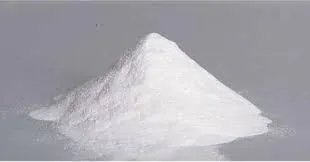
అక్టో . 19, 2024 11:09 Back to list
Comparing HPMC and HEC for Enhanced Pharmaceutical Applications and Performance
HPMC vs HEC A Comparative Analysis
Hydroxypropyl Methylcellulose (HPMC) and Hydroxyethyl Cellulose (HEC) are two significant cellulose ethers widely used in a variety of industrial and consumer applications. Both are derived from cellulose, a natural polymer found in plant cell walls, and they share some common properties. However, their chemical composition and specific functionalities lead to different characteristics, making them suitable for distinct applications. This article aims to provide a comprehensive comparison between HPMC and HEC, highlighting their properties, uses, and benefits.
Chemical Composition
The primary distinction between HPMC and HEC lies in their chemical structure. HPMC is modified with hydroxypropyl and methyl groups, while HEC is modified with hydroxyethyl groups. This fundamental difference in their chemistry results in variances in solubility, viscosity, and thermal stability.
HPMC is known for its excellent solubility in water, forming a clear, viscous solution upon hydration. Its solubility can be tailored by altering the degree of hydroxypropyl and methyl substitution. In contrast, HEC generally displays lower solubility in cold water but is more soluble in warm water. It typically forms a more gel-like consistency, which can be advantageous in specific applications such as thickening.
Viscosity and Rheological Properties
One of the crucial performance parameters for both HPMC and HEC is their viscosity, which can affect the texture and stability of formulations. HPMC generally exhibits a higher viscosity at lower concentrations compared to HEC. This property makes HPMC an attractive choice for applications requiring high thickening efficiency, such as in cosmetics, pharmaceuticals, and food products.
On the other hand, HEC's lower viscosity can be beneficial in applications where a lighter texture is desired. HEC is commonly utilized in products like paints and coatings, where it provides sufficient suspending properties without excessively thickening the formulation.
hpmc vs hec

Applications
HPMC is primarily used in the food industry as a food additive and thickener. It is also a key ingredient in the pharmaceutical industry, particularly in controlled-release formulations and as a binding agent in tablets. HPMC’s film-forming capabilities make it a valuable component in coatings and adhesives. In cosmetic formulations, it serves as a thickener and stabilizer, improving the product's application properties.
Conversely, HEC finds its main applications in paints, detergents, and personal care products due to its excellent emulsifying and thickening abilities. In the construction industry, HEC is used as an additive in cement and mortar to enhance workability and water retention. It is also popular in the production of various adhesive formulations, contributing to improved adhesion and surface coverage.
Benefits and Drawbacks
Both HPMC and HEC offer numerous advantages. HPMC is non-toxic, biodegradable, and does not cause irritation, making it suitable for sensitive applications such as food and pharmaceuticals. Its versatility and ability to form stable gels are additional benefits. However, HPMC can be more expensive than HEC, which may deter some manufacturers from using it in cost-sensitive applications.
On the other hand, HEC is more cost-effective and provides good performance in a variety of applications. Its lower viscosity at certain concentrations allows for ease of formulation without compromising quality. Nevertheless, HEC is less effective as a thickener compared to HPMC, which may limit its use in formulations requiring high viscosity.
Conclusion
In conclusion, while HPMC and HEC are both cellulose derivatives with overlapping functionalities, their differing chemical properties and performance characteristics make them suitable for different applications. HPMC's superior thickening ability and solubility render it ideal for the pharmaceutical and food industries, while HEC's cost-effectiveness and versatility make it a preferred choice for paints, personal care products, and construction materials. Understanding these differences allows manufacturers to select the appropriate cellulose ether for their specific needs, maximizing product performance and effectiveness.
-
Unlocking the Benefits of HPMC Products: A Gateway to Versatile Applications
NewsAug.07,2025
-
Tile Bonding Cellulose: The Key to Superior Adhesion and Durability
NewsAug.07,2025
-
Hydroxypropyl Methylcellulose Powder: The Versatile Component in Modern Pharmaceuticals
NewsAug.07,2025
-
Hydroxyethyl Cellulose: The Versatile Solution for Various Industries
NewsAug.07,2025
-
Hydroxyethyl Cellulose (HEC): The Versatile Polymer for Various Applications
NewsAug.07,2025
-
The Ultimate Guide to Mortar Bonding Agent
NewsAug.06,2025







